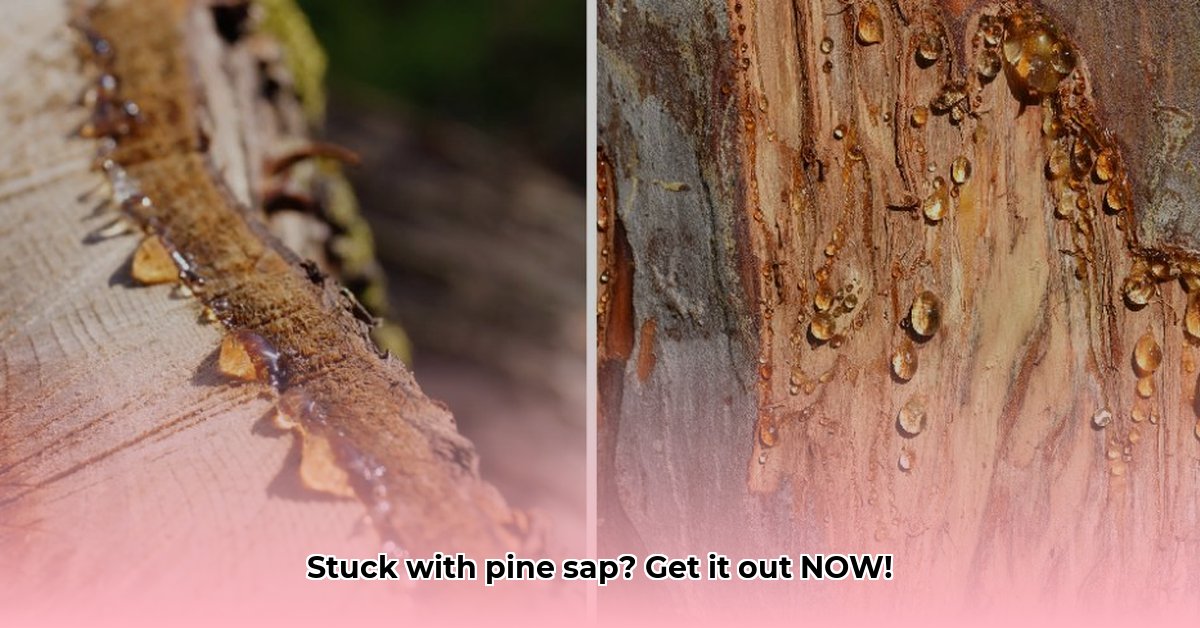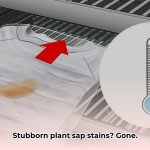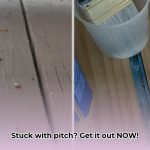Ugh, pine sap – that sticky souvenir from your awesome nature adventure. But don’t worry, getting pine sap on your clothes isn’t a clothing catastrophe! This guide is your pine-sap-busting toolkit, offering simple, effective methods for banishing those sticky spots and saving your clothes. We’ll cover everything from freezing to using everyday household items. So, relax – your clothes are about to be sap-free!
Banishing Pine Sap: Proven Methods
Getting pine sap on your clothes can be frustrating, but thankfully, there are several effective removal methods. Remember, fresh sap is generally easier to remove, so acting quickly is key. Always test any cleaning method on a hidden area first to avoid damaging the fabric. And remember, avoid heat until the stain is completely gone, as it can set the stain permanently.
1. Freezing & Scraping: An Icy Blast
This method works surprisingly well, especially for larger sap blobs. Cold temperatures harden the sap, making it brittle and easy to remove.
- Bag It: Place the garment in a plastic bag and seal it tightly to protect other items in your freezer.
- Freeze It: Pop the bagged garment into the freezer for a couple of hours, or until the sap is solid.
- Scrape It: Gently scrape the hardened sap away from the fabric using a dull knife, a spoon, or a credit card. Avoid using anything sharp that could damage the fabric.
- Alcohol Assist (Optional): For any remaining residue, dampen a clean cloth with rubbing alcohol (isopropyl alcohol) and gently blot the area.
- Wash as Usual: Launder the garment according to the care instructions.
Pro: Effective for larger, hardened sap deposits.
Con: Freezing may not be suitable for all fabrics; always pre-test! Freezing may also not remove all the sap; it might require additional steps.
[Video demonstrating the scraping process after freezing would go here.]
2. Rubbing Alcohol: Dissolving the Stickiness
Rubbing alcohol acts as a solvent, breaking down the sap. Higher concentrations of isopropyl alcohol are likely more effective, but start with a lower concentration (70%) to minimize the risk of damage.
- Spot Test: Test the alcohol on an inconspicuous area first.
- Blot: Dampen a clean cloth with rubbing alcohol and gently blot the sap stain. Avoid rubbing, which can spread the stain.
- Air Dry: Let the alcohol evaporate.
- Rinse: Rinse the area thoroughly with cold water. Repeat if necessary.
- Launder: Wash the garment as usual.
Pro: Quick and easy for small, fresh stains.
Con: Can damage some fabrics. Always spot-test.
[Video demonstrating the blotting technique with rubbing alcohol would go here.]
3. Dish Soap: A Gentle Touch
Dish soap is a milder option, particularly for delicates.
- Mix: Combine a few drops of mild dish soap with warm water.
- Soak & Blot: Apply the soapy solution to the stain and blot gently with a clean cloth.
- Rinse: Rinse thoroughly with cold water.
- Launder: Wash the garment according to the care instructions.
Pro: Gentle on delicate fabrics.
Con: May not be effective on large or set-in stains.
4. Laundry Detergent: First-Line Defense
Sometimes, laundry detergent is all you need!
- Scrape (Optional): If the sap is soft, gently scrape off any excess.
- Pre-Treat: Apply liquid detergent directly to the stain and work it in.
- Soak: Let the detergent sit for 5-10 minutes.
- Wash: Launder in the warmest water safe for the fabric.
- Air Dry (Initially): Ensure the stain is gone before machine drying.
Pro: Readily available; generally safe.
Con: May require multiple applications for stubborn stains.
5. Other Household Remedies: Unproven but Possibly Helpful
While these lack scientific backing, they are worth exploring:
- Peanut Butter: The oils may help break down the sap. Apply, let sit, rub gently, then launder.
- Hand Sanitizer: Similar to rubbing alcohol. Spot-test essential!
- Sunscreen: The oils might loosen the sap. Apply, let it sit, rub, then wash.
- WD-40: Effective, but test on an inconspicuous area first. Apply sparingly to the stain, let it sit, and blot before washing. Some people suggest using WD-40, but research on this method is limited, and it’s important to use caution, as it could potentially damage certain fabrics. WD-40 would probably be most effective on sturdy fabrics like cotton or canvas.
- White Vinegar: Create a 50/50 vinegar and water solution. Apply to the stain, let it soak for about 30 minutes, then blot and wash. Some believe the acidity of vinegar can help break down sap components, but more research is needed.
Pro: Often readily available.
Con: Effectiveness varies; always spot-test.
6. Commercial Stain Removers
For stubborn stains, consider a commercial stain remover designed for grease or oil. Always follow the product instructions and pre-test.
Choosing the Right Method
| Method | Pros | Cons | Best For |
|---|---|---|---|
| Freezing & Scraping | Easy, no special products needed, generally safe | May not remove all sap | Initial removal, most fabrics |
| Rubbing Alcohol | Effective, readily available | Can damage delicate fabrics; always test first | Durable fabrics |
| Laundry Detergent | Convenient, generally safe | May require multiple applications | Most fabrics |
| Dish Soap | Gentle, good for delicates | May not work on stubborn stains | Delicate fabrics |
| Commercial Stain Remover | Powerful, designed for tough stains | Can be harsh, requires pre-testing | Stubborn stains |
| Other Household Remedies | May work, readily available | Effectiveness not guaranteed, some may be messy | Last resort, experimentation |
FAQs
- Stain remains after washing? Repeat the method or try a different one. Avoid the dryer until the stain is completely gone.
- These methods work on other saps? They may be effective, but always test first. The composition of sap varies between tree species, which can affect the efficacy of different cleaning methods.
- How to prevent sap stains? Wear long sleeves and pants in wooded areas. Consider carrying stain removal wipes (pre-test these as well).
Why Removing Pine Sap is Important
Pine sap isn’t just sticky—it can discolor and damage fabric fibers. Over time, the sap hardens, attracting dirt and making the stain even more noticeable and difficult to remove. Removing pine sap promptly helps prevent permanent damage to your clothes.
By understanding these methods and taking prompt action, you can keep your clothes sap-free. Remember, patience and the right technique are key. Good luck!
- Wellness Fair Ideas for Work to Boost Employee Wellbeing - December 15, 2025
- Affordable Employee Wellness Fair Ideas for Any Budget - December 14, 2025
- Employee Wellness Programs Strategically Benefit Employee Health And Retention - December 13, 2025
















